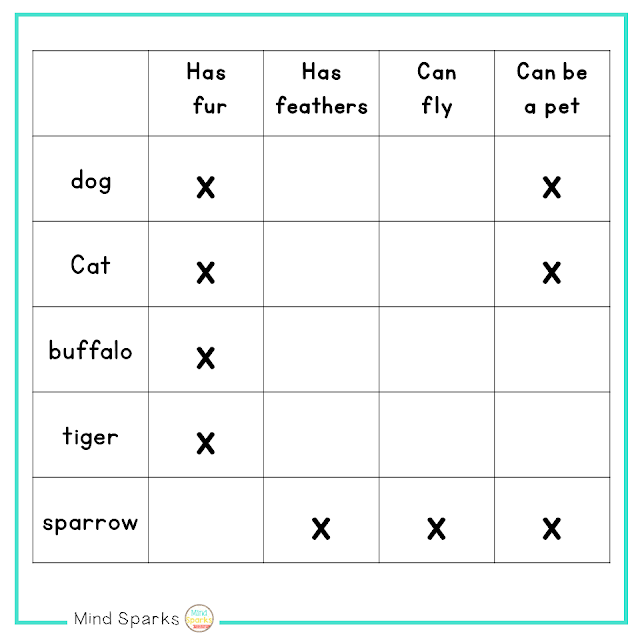Increasing a student's vocabulary is important, as vocabulary knowledge has a direct correlation to comprehension.
When we carefully select words and then explicitly teach students those word meanings, we are helping students create a deep understanding of words. Vocabulary instruction is imperative for all kids, but vital for students who have under developed vocabularies.
In 5 Ways to Practice Vocabulary Effectively, I provided 5 ways teachers can have students interact with vocabulary terms that will facilitate word connections. Lets take a look at resources you might be able to use for each of those steps!
1. Multiple Meanings
Did you know there are 5,000 or so common words in English that have multiple meanings! Crazy, right?
Simple word maps are an easy way to help students see multiple meanings words can have. A word map can be as simple as the one pictured below--a circle with a target term in the middle, and connected circles that represent the multiple meanings.
If you are working with more advanced readers and need a word map with more rigor, check out the map below. This map has students expanding their understanding by using vocabulary terms in a sentence, writing a definition and drawing a picture.
2. Classify Words into Categories
Our brains crave organization and patterning. As we learn new words our brains create pathways to connect new words with known words. To help my students develop those pathways, I use word sorts! I LOVE word sorts, and students do too!!
Check out this free one-pager resource which includes 12 different ways you can have students sort and classify words! A list of words can be compiled based on a spelling pattern, phonics skill, vocabulary or grammar concept!
Are you in need of pre-made word sorts? Maybe you simply don't have the time (or energy...I feel ya) to create your own.
Look no further....I have oodles of them! Just click the images below!
3. Analyze Semantic Features
Semantic feature analysis is a strategy to compare characteristics of words. Many words have some in common properties, and identifying those helps students create word networks.
Check out the Semantic Feature Analysis from Reading Rockets. This article takes a deeper dive into analyzing characteristics of words, and you can download a free semantic feature analysis grid!!
4. Use Antonyms & Synonyms
Anytime you help students gain a deeper meaning of a vocabulary term ...it is a win! Use a vocabulary graphic organizer (like the one pictured below) to assist students in clarifying their understanding about new words.
Most vocabulary word maps will include synonyms, antonyms and a space to list characteristics.

Building students' vocabularies takes TIME and many, many, many encounters with words! Incorporating any of the above strategies and resources into your daily routine will get your students on the path to being word masters!!










No comments:
Post a Comment